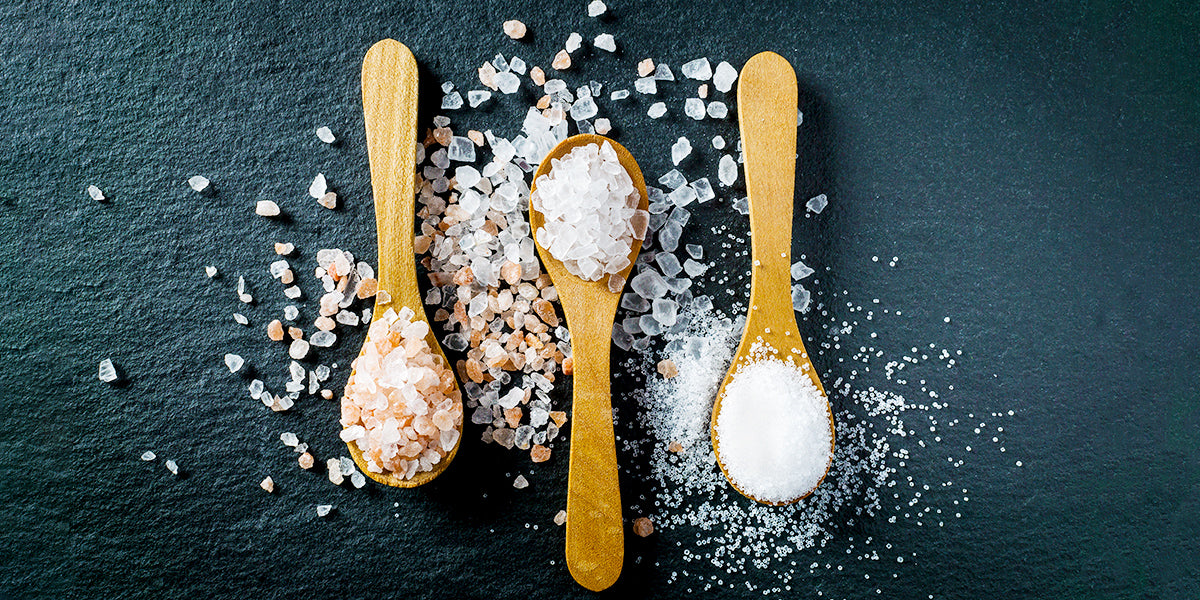
The Salty Side of Sodium
Mmmm, salt! Not only does it make many foods taste better, but salt (or sodium, rather) is an essential nutrient that your body needs. You’ve likely heard that most people should reign in their sodium intake, while a few others should get a little more.
Here’s help for understanding this tricky nutrient so you can use it and not abuse it.

Why we need sodium
Though sodium and salt seem synonymous, they are different things. Salt is a crystalline mineral composed almost primarily of sodium chloride, a natural compound made of two chemical elements: sodium (Na) and chloride (Cl). Since sodium is the only nutrient of any significance in salt and salt is our main source of sodium, we often think of them interchangeably.
Your body uses sodium to control the flow of blood, helping to regulate your blood pressure and blood volume. You also need sodium for your muscles and nerves to work properly.
What happens when you get too much sodium
Though sodium is important to help your body use and move blood, an excess of sodium can cause serious health problems. If you get too much sodium from your diet or your body doesn’t properly rid itself of excess sodium, the build up can lead to chronic high blood pressure, as well as a harmful excess of body fluids that cause stress on your heart, liver, and kidneys.
According to the American Heart Association, humans older than one year need a minimum of 500 milligrams of sodium (the equivalent of a scant ¼ teaspoon of salt) daily in order for our hearts and bodies to function optimally. Too little sodium can cause a rare condition called hyponatremia, which is an excess of water in our blood. The people who tend to need more sodium are athletes who sweat frequently, non-athletes who sweat excessively, healthy eaters who get plenty of potassium, and people taking certain medications (such as diuretics) that can increase sodium losses.
But far more often, people get more sodium than they need, rather than less. The Dietary Guidelines for Americans suggests adults limit sodium intake to 2,300 milligrams daily (about 1 teaspoon), and most Americans take in 1,200 milligrams more than that, for an average of 3,500 milligrams per day.

Where sodium comes from
Nearly all foods naturally contain some sodium. But sodium is also added to foods during manufacturing as a preservative, texturizer, and flavoring. Sodium is added to processed foods in several forms, including monosodium glutamate (MSG), sodium nitrite, sodium saccharin, baking soda (sodium bicarbonate), sodium benzoate, soy sauce, and bouillon.
While the salt shaker is often to blame for excess salt, it actually only makes up about 5% of the salt we eat. The main culprit? Most sodium in the standard American diet comes from processed packaged foods and restaurant meals.
When dining out, be sure to balance all that hidden sodium in restaurant meals and take-out meals by selecting choices that will contain potassium, too. Potassium is another mineral that can blunt the impact of all that sodium. Find potassium in restaurant meals that contain vegetables, fruits, grains, nuts, and beans.
At home, the highest sources of sodium are:
- Breads and Rolls - cut sodium down by selecting thin slices and choosing whole-grain options
- Pizza - reign in sodium by selecting veggie-dense pizza sauce, making your own crust, and including lots of veggies as toppers
- Sandwiches - to keep sodium lower, try serving sandwiches open-face, choose thinner bread, and top with cooked, shredded chicken instead of cold cuts
- Cold Cuts and Cured Meats - limit servings to twice a week or less to cut down on sodium from this source
- Soup, Sauces, and Condiments - select cleaned-up pantry foods like Otamot Essential Sauce that provides twice as much potassium as sodium due to each jar containing 10 organic vegetables
- Burritos and Tacos - make your own low-sodium taco seasoning and try serving as burrito bowls or taco salads every once in awhile

Jessie Shafer is a registered dietitian-nutritionist, team member at The Real Food Dietitians, former magazine editor, and busy mom of two who loves to break down nutrition into digestible bites.

